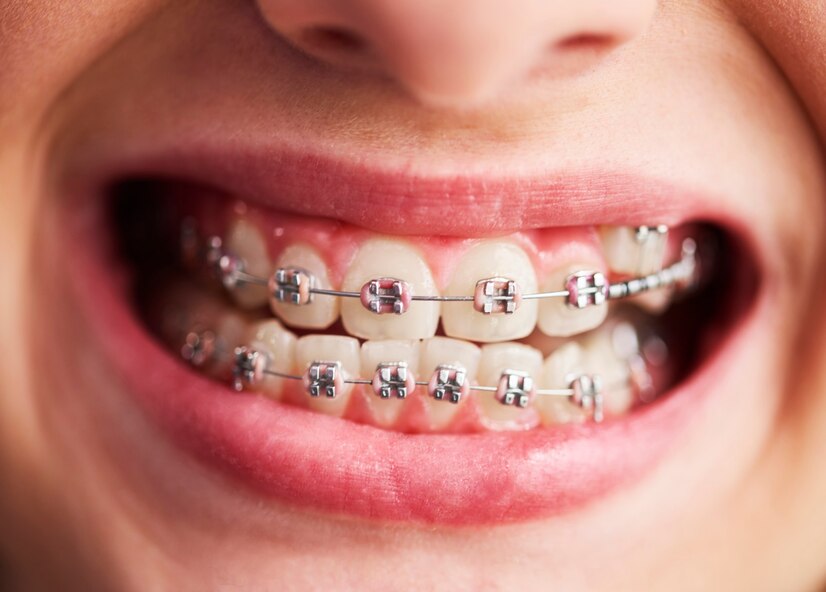Exploring The Pros And Cons Of Braces And Aligners
Orthodontic treatment has come a long way, offering individuals various options to correct misaligned teeth and achieve a beautiful smile. Two popular methods for straightening teeth are traditional braces and clear aligners. Each of these approaches has its own set of advantages and disadvantages, making it essential for individuals to consider their specific needs and preferences when choosing between them.
To Know More About It Please Click Here
Braces
Pros:
Effective for Complex Cases: Braces are highly effective for correcting severe misalignments, such as overcrowded teeth, significant overbites, underbites, and crossbites. They apply constant pressure to gradually shift the teeth into the desired position.
Suitable for All Ages: Braces are suitable for patients of all ages, including children, teenagers, and adults. They are particularly beneficial for children with developing jaws and teeth.
Predictable Results: With braces, the orthodontist has precise control over the movement of each tooth, allowing for predictable and precise results. This ensures a well-aligned and functional bite at the end of treatment.
No Compliance Required: Unlike clear aligners, which require strict adherence to wearing schedules, braces are fixed onto the teeth, eliminating the need for patient compliance. Once they are installed, they work continuously without any additional effort from the patient.
Cons:
Visibility: Traditional metal braces are noticeable, which can be a concern for individuals who are conscious about their appearance. However, advancements in orthodontic technology have led to the development of ceramic braces that are less visible.
Dietary Restrictions: Patients with braces need to avoid certain foods that can damage the brackets and wires, such as sticky candies, hard fruits, and chewy snacks. This can require some adjustments to dietary habits during the treatment period.
Discomfort: Initially, patients may experience discomfort or soreness after the braces are tightened or adjusted. However, this discomfort typically subsides within a few days as the mouth adjusts to the pressure.
Aligners
Pros:
Aesthetics: People who want to have orthodontic treatment covertly may find clear aligners to be a desirable alternative because they are almost undetectable. They are made of transparent plastic material, allowing the natural appearance of the teeth to shine through.
Removable: Aligners are removable, which makes eating, drinking, brushing, and flossing more convenient compared to braces. This feature also allows for greater flexibility in lifestyle and social situations.
Comfort: Clear aligners are custom-made to fit snugly over the teeth, minimizing discomfort and irritation to the gums and soft tissues of the mouth. Unlike braces, they do not have sharp wires or brackets that can cause abrasions.
No Dietary Restrictions: Since aligners are removable, there are no dietary restrictions during treatment. Patients can continue to enjoy their favorite foods without worrying about damaging the orthodontic appliance.
Cons:
Compliance Dependent: The success of clear aligner treatment relies heavily on patient compliance. Aligners must be worn for 20-22 hours per day and changed according to the prescribed schedule to achieve optimal results. Failure to comply can prolong treatment time or compromise outcomes.
Limited Effectiveness for Complex Cases:
Clear aligners may not be suitable for correcting severe orthodontic issues or complex bite problems. They are more effective for mild to moderate misalignments and may require additional adjunctive treatments for comprehensive correction.
Cost
Clear aligner treatment tends to be more expensive than traditional braces, which can be a deterrent for some patients. Nonetheless, to make treatment more accessible, a lot of orthodontic offices provide flexible payment options.
conclusion
both braces and aligners offer effective solutions for straightening teeth and achieving a confident smile. The choice between them depends on various factors such as the severity of the orthodontic issues, aesthetic preferences, lifestyle considerations, and budget constraints. Consulting with an experienced orthodontist can help individuals make informed decisions and embark on the journey toward a healthier and more beautiful smile.
Also, Follow us on Instagram







